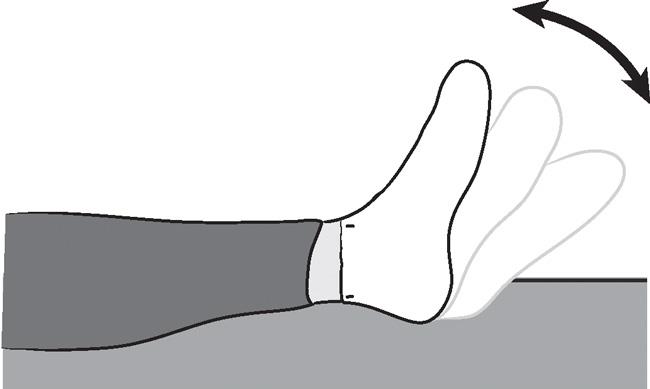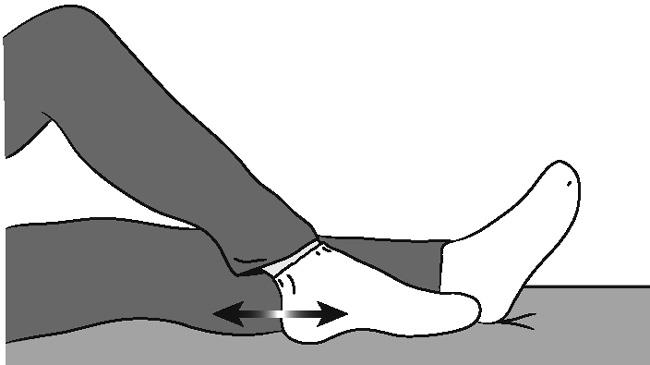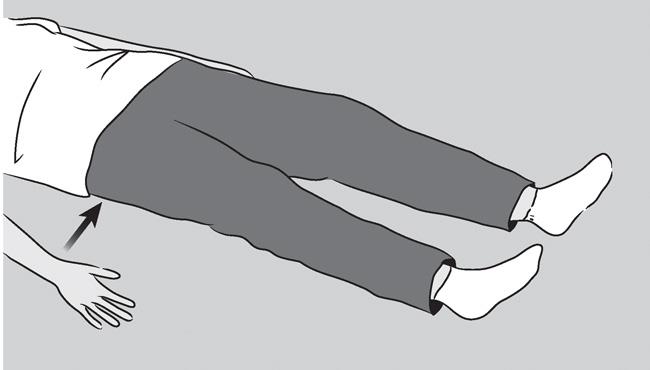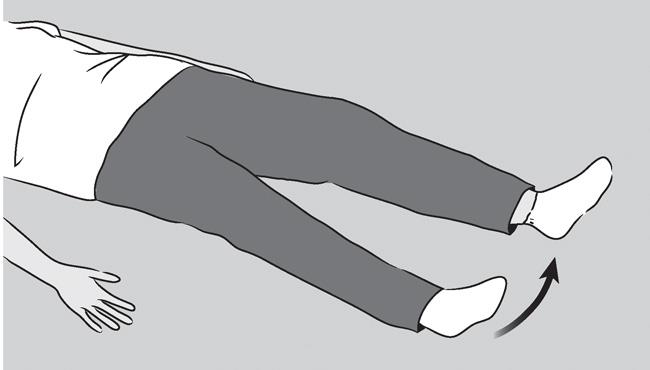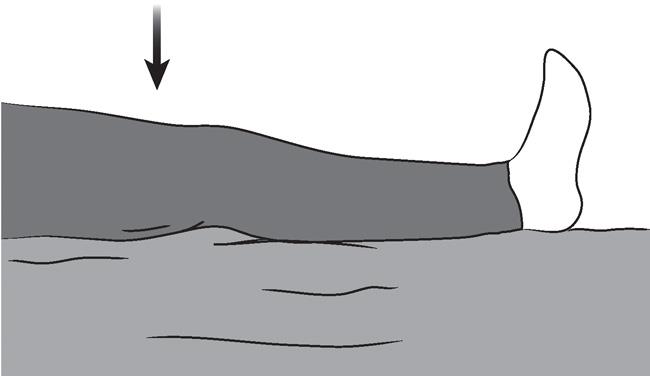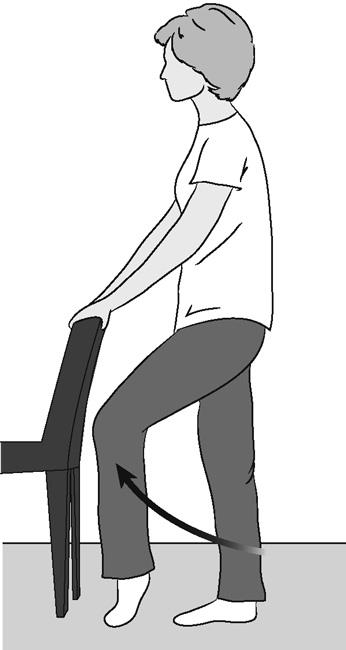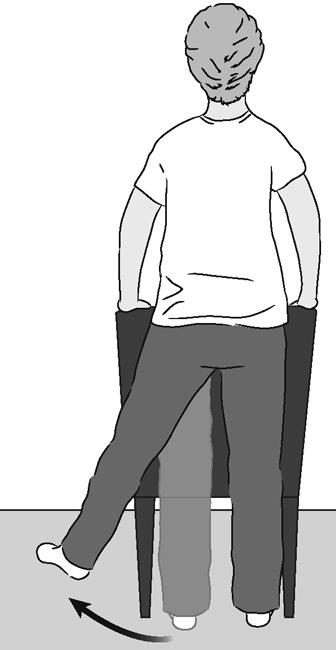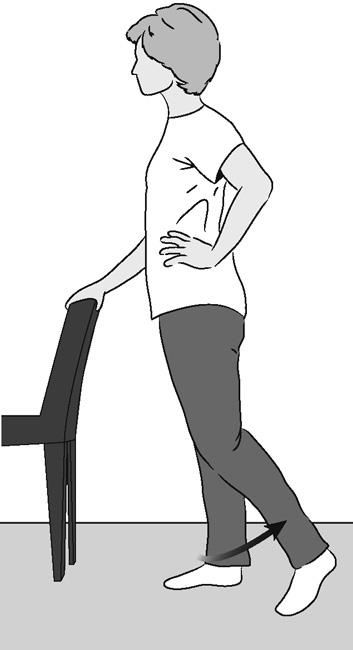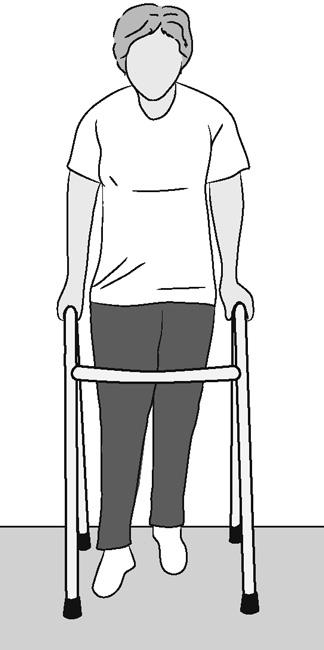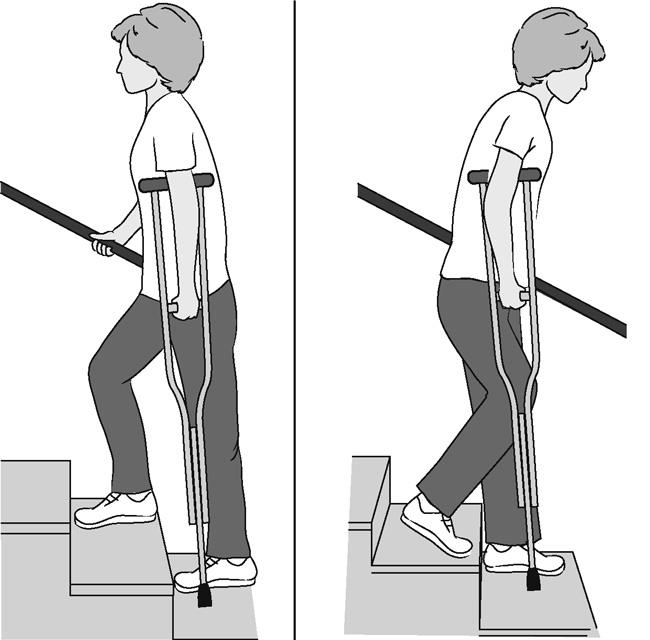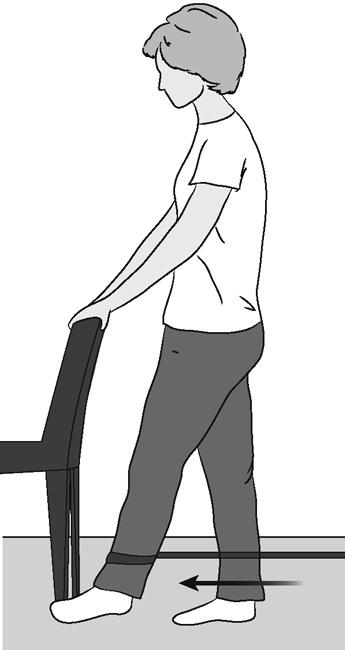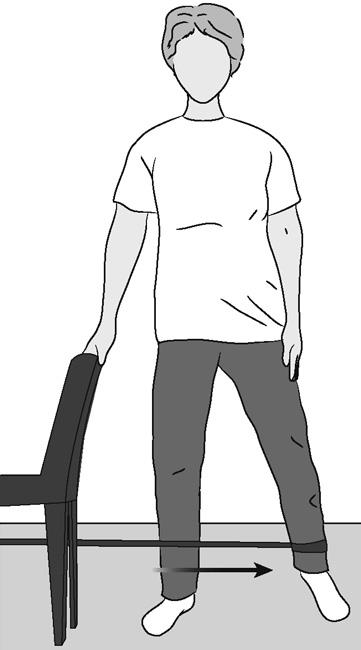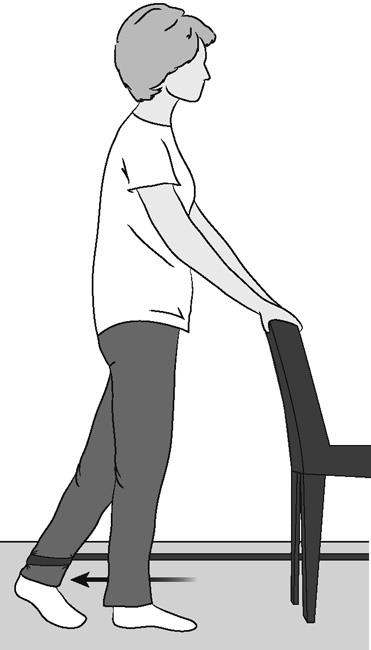Recovery
Total Hip Replacement Exercise Guide
Regular exercise to restore strength and mobility to your hip and a gradual return to everyday activities are important for your full recovery after total hip replacement. Your orthopaedic surgeon and physical therapist may recommend that you exercise for 20 to 30 minutes a day, or even 2 to 3 times daily during your early recovery. They may suggest some of the exercises shown below.
This guide can help you better understand your exercise and activity program, supervised by your physical therapist and orthopaedic surgeon. To ensure your safe recovery, be sure to check with your therapist or surgeon before performing any of the exercises shown.
Early Post-Operative Exercises
The following exercises will help increase circulation to your legs and feet, which is important for preventing blood clots. They will also help strengthen your muscles and improve hip movement.
Start the exercises as soon as you are able. You can begin them in the recovery room shortly after surgery. You may feel uncomfortable at first, but these exercises will enhance your recovery and actually diminish your post-operative pain.
Ankle Pumps
- Slowly push your foot up and down.
- Repeat this exercise several times, as often as every 5 or 10 minutes.
- If you are watching television, you should pump your feet every time a commercial comes on.
Begin this exercise immediately after surgery and continue it until you are fully recovered.
Ankle Rotations
- Move your ankle inward toward your other foot and then outward away from your other foot.
- Repeat 5 times in each direction.
- This exercise should take 3 minutes.
- Do 3 to 4 sessions a day.
Bed-Supported Knee Bends
- Slide your foot toward your buttocks, bending your knee and keeping your heel on the bed. Do not let your knee roll inward.
- Hold your knee in a maximally bent position for 5 to 10 seconds.
- Straighten your leg.
- Repeat 10 times.
- This exercise should take 3 minutes.
- Do 3 to 4 sessions a day.
Buttock Contractions
- Tighten your buttock muscles and hold to a count of 5.
- Repeat 10 times.
- This exercise should take 90 seconds.
- Do 3 to 4 sessions a day.
Abduction Exercise
- Slide your leg out to the side as far as you can and then back.
- Repeat 10 times.
- This exercise should take 90 seconds.
- Do 3 to 4 sessions a day
Quadriceps Set
- Tighten your thigh muscle. Try to straighten your knee. Hold for 5 to 10 seconds.
- Repeat this exercise 10 times during a 10-minute period, rest one minute and repeat.
- Continue until your thigh feels fatigued.
- This exercise should take 2 minutes.
Straight Leg Raises
- Tighten your thigh muscle with your knee fully straightened on the bed.
- Lift your leg several inches. Hold for 5 to 10 seconds.
- Slowly lower your leg.
- Repeat until your thigh feels fatigued.
- This exercise should take 2 minutes.
Standing Exercises
Soon after your surgery, you will be out of bed and able to stand. You will require help at first but, as you regain your strength, you will be able to stand independently. While doing these standing exercises, make sure you are holding on to a firm surface such as a bar attached to your bed or a wall.
Standing Knee Raises
- Lift your operated leg toward your chest. Do not lift your knee higher than your waist. Hold for 2 or 3 counts.
- Put your leg down.
- Repeat 10 times.
- This exercise should take 3 minutes.
- Do 3 to 4 sessions a day.
Standing Hip Abduction
- Be sure your hip, knee and foot are pointing straight forward. Keep your body straight. With your knee straight, lift your leg out to the side.
- Slowly lower your leg so your foot is back on the floor.
- Repeat 10 times.
- This exercise should take 2 minutes.
- Do 3 to 4 sessions a day.
Standing Hip Extensions
- Lift your operated leg backward slowly. Try to keep your back straight. Hold for 2 or 3 counts.
- Return your foot to the floor.
- Repeat 10 times.
- This exercise should take 2 minutes.
- Do 3 to 4 sessions a day.
Early Activity
Soon after surgery, you will begin to walk short distances in your hospital room and perform light everyday activities. This early activity aids your recovery and helps your hip regain its strength and movement.
Walking
Proper walking is the best way to help your hip recover. At first, you will walk with a walker or crutches. Your surgeon or therapist will tell you how much weight to put on your leg.
- Stand comfortably and erect with your weight evenly balanced on your walker or crutches.
- Advance your walker or crutches a short distance; then reach forward with your operated leg with your knee straightened so the heel of your foot touches the floor first.
- As you move forward, your knee and ankle will bend and your entire foot will rest evenly on the floor.
- As you complete the step, your toe will lift off the floor and your knee and hip will bend so that you can reach forward for your next step. Remember, touch your heel first, then flatten your foot, then lift your toes off the floor.
- Walk as rhythmically and smoothly as you can. Don't hurry. Adjust the length of your step and speed as necessary to walk with an even pattern.
- As your muscle strength and endurance improve, you may spend more time walking, and you will gradually put more weight on your leg.
- When you can walk and stand for more than 10 minutes and your leg is strong enough so that you are not carrying any weight on your walker or crutches, you can begin using a single crutch or cane. Hold the aid in the hand opposite the side of your surgery.
Stair Climbing and Descending
Stair climbing is an excellent strengthening and endurance activity, and it also requires flexibility.
- At first, you will need a handrail for support and will be able to go only one step at a time. Always lead up the stairs with your good leg and down the stairs with your operated leg. Remember, "up with the good" and "down with the bad."
- You may want to have someone help you negotiate stairs until you have regained most of your strength and mobility.
- Do not try to climb steps higher than the standard height (7 inches) and always use a handrail for balance.
- As you become stronger and more mobile, you can begin to climb stairs foot over foot.
Advanced Exercises and Activities
The pain from your hip problems before your surgery and the pain and swelling after surgery have weakened your hip muscles. In addition, the muscles around your hip prior to total hip replacement became short and tight because your hip didn't move. A full recovery will take many months, and it will take time for your muscles to recondition and get used to your new hip that moves freely. The following exercises and activities will help your hip muscles recover fully.
These exercises should be done in 10 repetitions, 4 times a day. Place one end of the tubing around the ankle of your operated leg and attach the opposite end of the tubing to a stationary object such as a locked door or heavy furniture. Hold on to a chair or bar for balance.
Elastic Tube Exercises
Resistive Hip Flexion
- Stand with your feet slightly apart.
- Bring your operated leg forward keeping the knee straight.
- Allow your leg to return to its previous position.
Resistive Hip Abduction
- Stand sideways from the door to which the tubing is attached.
- Extend your operated leg out to the side.
- Allow your leg to return to its previous position.
Resistive Hip Extensions
- Face the door to which the tubing is attached.
- Pull your leg straight back.
- Allow your leg to return to its previous position.
Exercycling
Riding an exercise bike is an excellent activity to help you regain muscle strength and hip mobility.
- At first, adjust the seat height so that the bottom of your foot just touches the pedal with your knee almost straight.
- Pedal backwards at first.
- Ride forward only after a comfortable cycling motion is possible backwards.
- As you become stronger (at about 4 to 6 weeks) slowly increase the tension on the exercycle. Exercycle for 10 to 15 minutes 2 times a day at first, gradually building up to 20 to 30 minutes, 3 to 4 times a week.
Walking
Walk with a cane until you have regained your balance skills. It is also safe to walk on a treadmill if you are concerned about walking outside on uneven ground.
- In the beginning, walk for 5 to 10 minutes, 3 to 4 times a day.
- As your strength and endurance improve, you can walk for 20 to 30 minutes, 2 to 3 times a day.
- Once you have fully recovered, regular walks of 20 to 30 minutes, 3 to 4 times a week, will help maintain your strength.
Last Reviewed
February 2022
Contributed and/or Updated by
Peer-Reviewed by
AAOS does not endorse any treatments, procedures, products, or physicians referenced herein. This information is provided as an educational service and is not intended to serve as medical advice. Anyone seeking specific orthopaedic advice or assistance should consult his or her orthopaedic surgeon, or locate one in your area through the AAOS Find an Orthopaedist program on this website.








